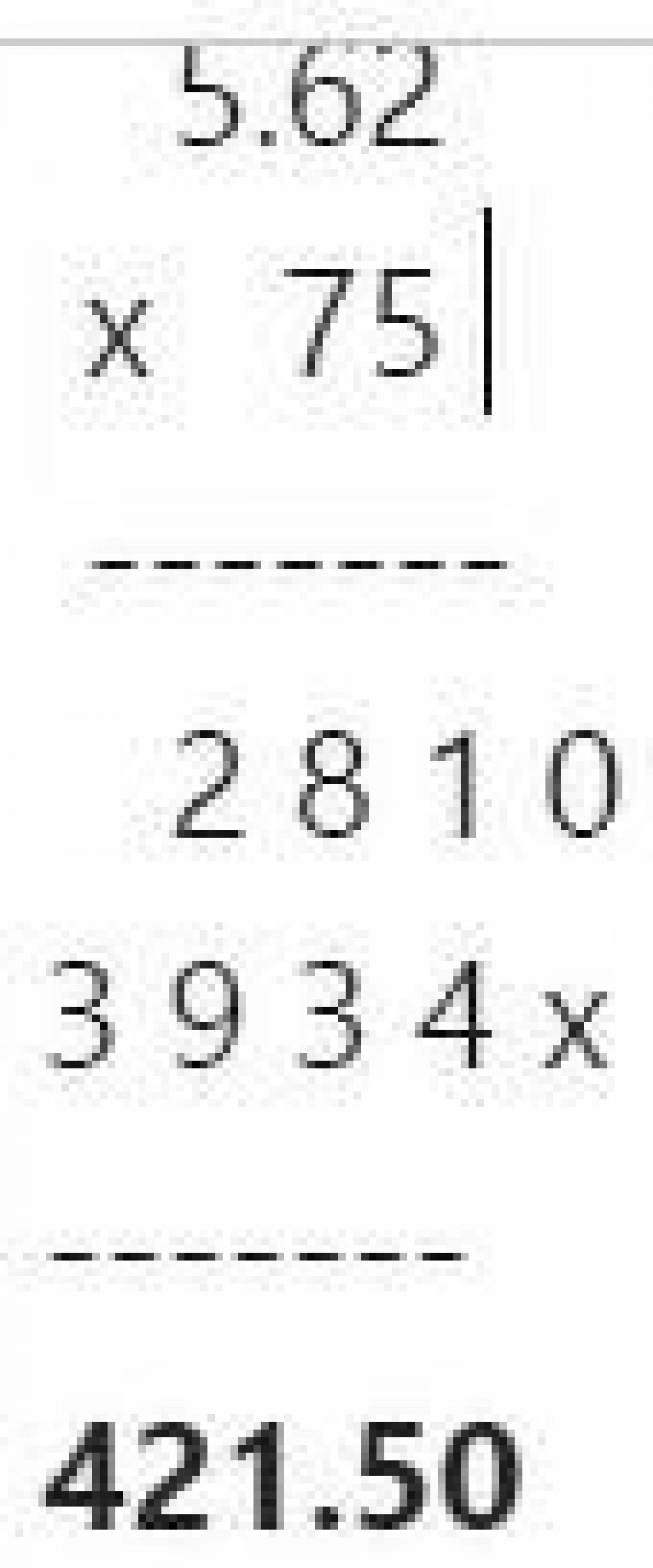Answer:
421.50
Step-by-step explanation:
To compute 75 times 5.62, we need to multiply 75 and 5.62
Steps are shown below:

First we need to multiply the unit place digit that is 5 with 5.62 which gives 2810.
Next, multiply 10th place digit that is 7 with 5.62 which give 3934.
Now add both 2810 and 3934 as shown in the picture above.
This gives the addition as 42150.
To put the decimal, just count the number of decimal places in the input number.
In 5.62 the decimal is after 2 number. So, in the answer put the decimal after two places.